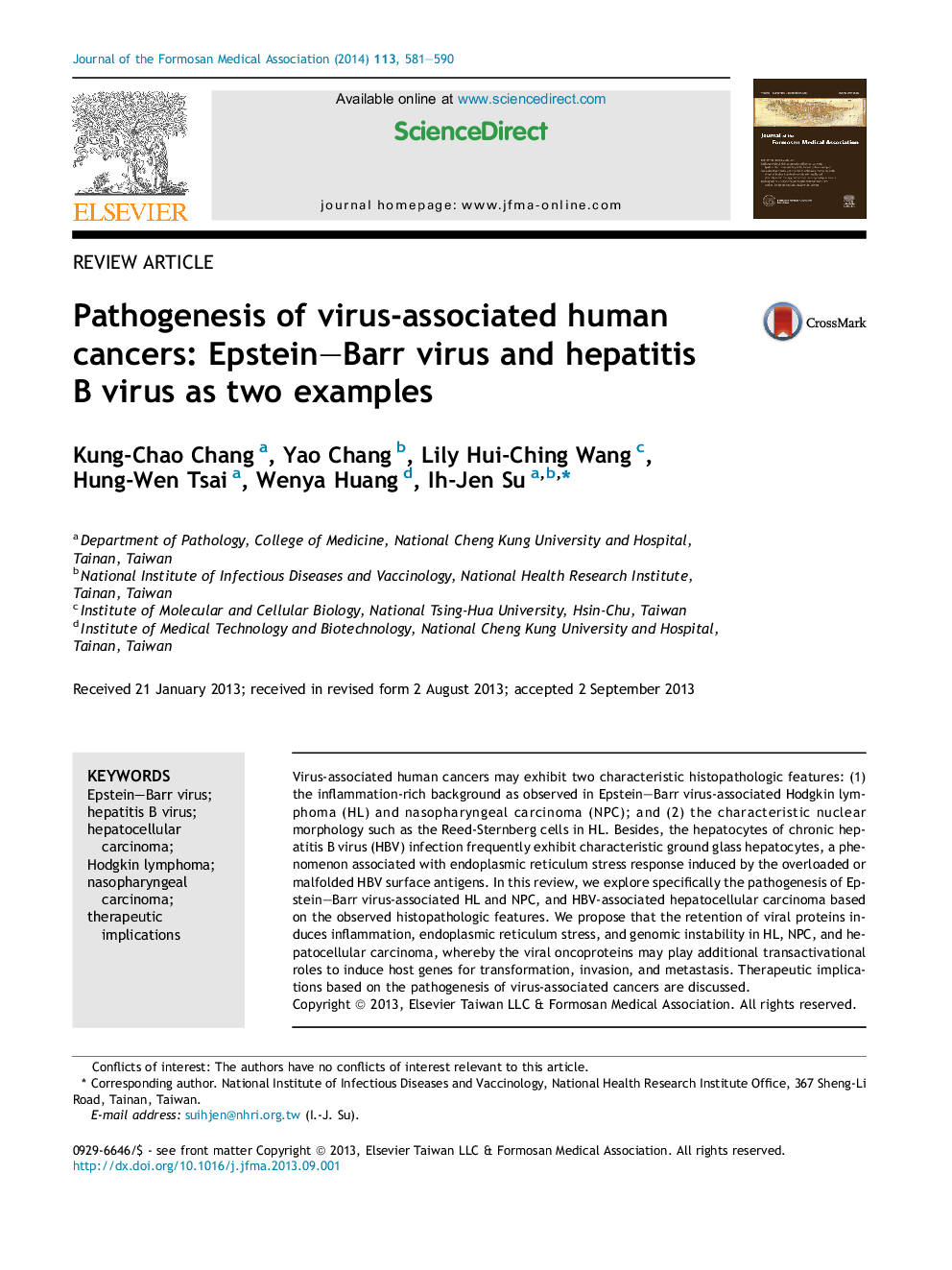| Article ID | Journal | Published Year | Pages | File Type |
|---|---|---|---|---|
| 3478891 | Journal of the Formosan Medical Association | 2014 | 10 Pages |
Virus-associated human cancers may exhibit two characteristic histopathologic features: (1) the inflammation-rich background as observed in Epstein–Barr virus-associated Hodgkin lymphoma (HL) and nasopharyngeal carcinoma (NPC); and (2) the characteristic nuclear morphology such as the Reed-Sternberg cells in HL. Besides, the hepatocytes of chronic hepatitis B virus (HBV) infection frequently exhibit characteristic ground glass hepatocytes, a phenomenon associated with endoplasmic reticulum stress response induced by the overloaded or malfolded HBV surface antigens. In this review, we explore specifically the pathogenesis of Epstein–Barr virus-associated HL and NPC, and HBV-associated hepatocellular carcinoma based on the observed histopathologic features. We propose that the retention of viral proteins induces inflammation, endoplasmic reticulum stress, and genomic instability in HL, NPC, and hepatocellular carcinoma, whereby the viral oncoproteins may play additional transactivational roles to induce host genes for transformation, invasion, and metastasis. Therapeutic implications based on the pathogenesis of virus-associated cancers are discussed.
